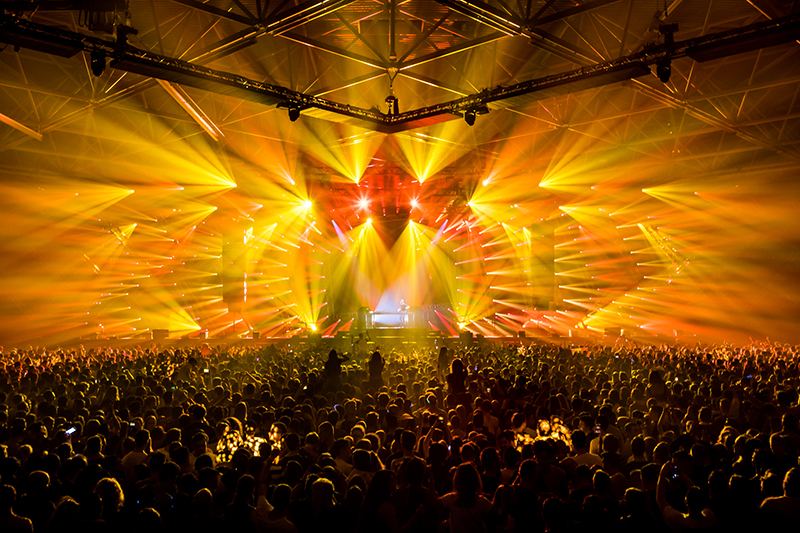
Designing Distinctive Visuals — and a Unique Career…
Gabriel Fraboni was practically born and bred in live entertainment production. From a very early age, he knew he wanted to be in the music business “somehow, someway,” and he was determined to learn whatever was necessary for his success. His process is considerably traditional for the 21st century: Learn the tools inside out and apply that knowledge in practical onsite participation. This foundation has helped him develop into a leader who has been able to seamlessly direct many different teams towards a singular vision.
Both of his parents were involved in the music industry. His father is a music producer and front of house (FOH) engineer, and his mother was in the record label space. Together, the couple helped launch Island Records. Fraboni Sr. still works in the industry.
“My dad, Rob, worked for bands like the Beach Boys, the Rolling Stones and Bob Dylan,” Gabe says. “I grew up around the Rolling Stones because my dad would go on the road as Keith Richard’s FOH consultant. Seeing my dad in his element, inspired me and I knew from a very young age that I wanted to be involved in the music industry.”
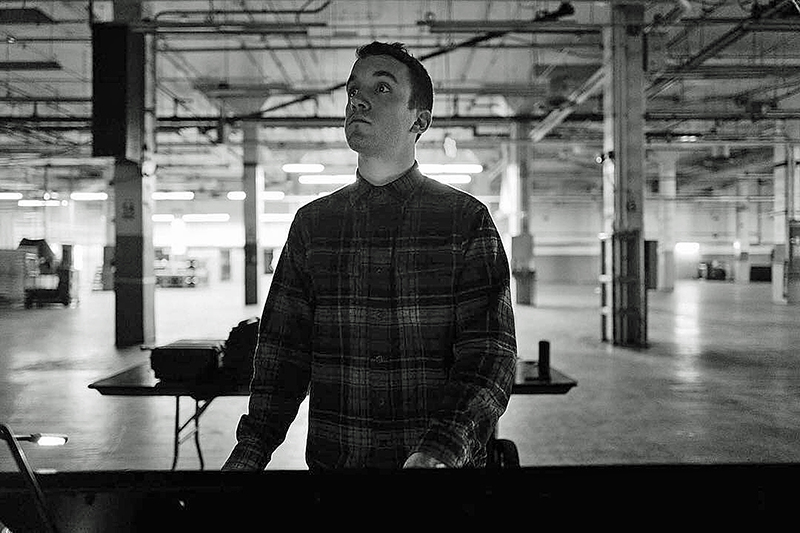
Early Influences
“We had a music room in my house where my family and I would chill out and spend hours listening to records. The first record my dad gave me was “In a Silent Way” by Miles Davis. But the one that really left its mark on me was my mom’s favorite, “Homework,” by Daft Punk. I was obsessed with it. I listened to it on repeat for years. She finally took me to see their Alive tour in 2007, and it was a mystical experience that left a huge impression on me. Seeing Martin Phillips’ direction and design blew me away — the way he pulled all of these elements together to build the arc of the show was really impactful.”
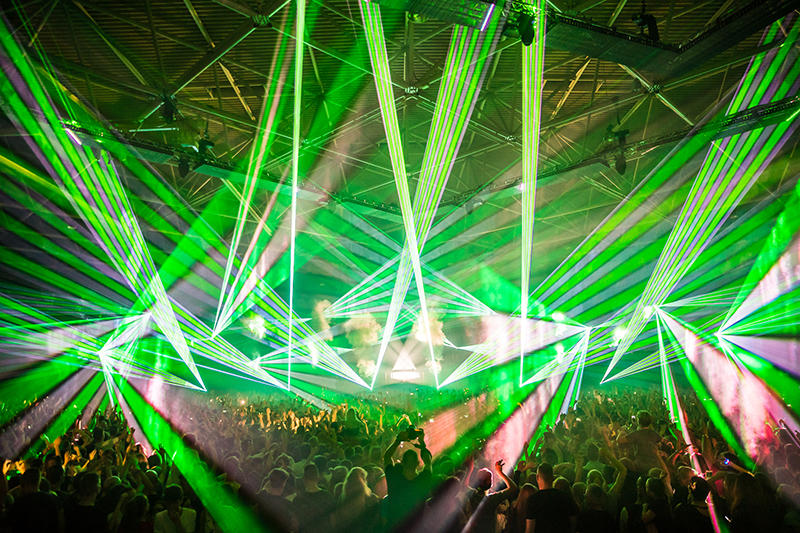
The “Wow” Moment, and Beginnings
His first “wow” moment occurred at the Giants stadium during the Rolling Stones’ Bridges to Babylon tour (1997-1998). The band had just finished their sound check, and Fraboni was standing at FOH with his father, watching designer Patrick Woodroffe at work. Suddenly, Gabe was hit with “this overpowering desire to know what those buttons do.” He asked, and was granted permission, to push one of those buttons. “Every strobe light in the rig went off. In a flash, I knew…this is what I want to do!”
Though Fraboni’s upbringing played a huge role in his dedication to the craft, he has always been determined to get into the industry without using his family’s name. “I wanted to put in the work to forge my own path and establish myself on my own merit.”
This resoluteness led him to pursue a hand on experiential approach, seeking out mentors and immersing him in the language of the technology. “Growing up, if I was working on some new tech or equipment and needed help, my dad would tell me to read the manual before he would answer any questions. That method engrained itself into my workflows,” he recalls.
His biggest inspirations are Andi Watson, Patrick Woodroffe and Mark Fisher. “My mom loved Radiohead and Daft Punk. She took me to as many shows as she could and was a huge influence on me, both musically and aesthetically.”
His mother, who was the valedictorian of her class at Georgetown, set firm boundaries for how Gabriel could achieve his aspirations. “My mom took education very seriously and was adamant that I could not drop out of school to become a roadie.”
With his mother’s guidance, Gabriel found a way to explore his interests within the school system. In middle school, he joined the drama department. He began as a spotlight operator in sixth grade and worked his way up through the ranks of technical theater from high school to college, where he studied theatrical lighting design at the University of North Carolina.
“For me, theater was a blessing, because I learned how to develop a show arc with a clear narrative. In theater, the lighting, scenic and direction all emphasize the script and highlight it visually. With the advent of dance music, the visual show is as important as the music itself. I learned how to underscore narratives with visual emphasis during my theater years. Now, whenever I’m working on a new concept, I write a short story beforehand and use that narrative to drive the show.
“That has been really important to me in my work,” he says, “making sure everything I do across the board is cohesive. I think that is when the audience leaves amazed.” Fraboni cites the Nine Inch Nails tour directed by Leroy Bennett as an example of a concept-driven show. “The entire show was so aesthetically strong that I was still affected by it, long after the concert was over.”
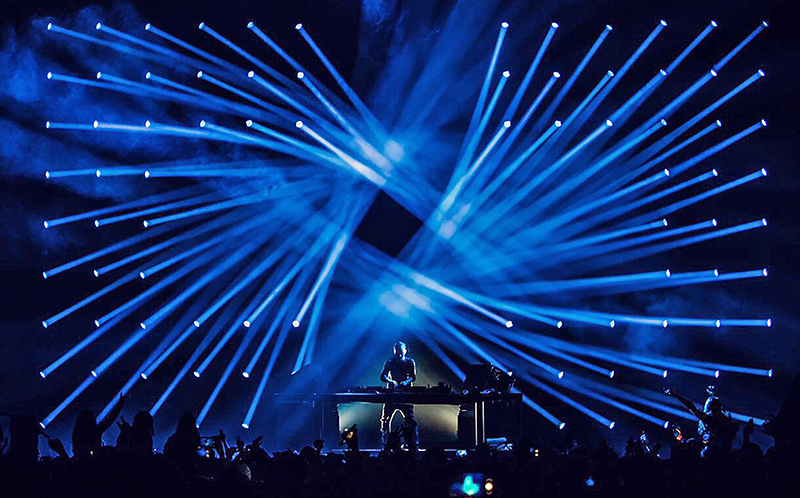
Life Happens
Gabriel left UNC during his first semester of junior year, to care for his mother, who was diagnosed with cancer. It was at this time that Gabriel became the primary caregiver of his family, which would later have a significant effect on him.
“I went through this really turbulent part of my life at the beginning of 2018. I was finally starting to grieve my mom and it all hit me at once. For the first time, I felt like I’d lost my way. I went down a tumultuous path as a result. I burned some of my closest friendships and almost destroyed the career I’d worked so hard to build. I was taking jobs and losing interest in them, and I sometimes left jobs unfinished. I had a complete lack of focus for about nine months. It took a lot of self-reflection and work to pull myself out of that, but I feel the strongest and most focused I have ever felt.
“My older brother recently passed away, and with him and my mother gone, my role as a caretaker has come to a close. I had to re-learn how to take care of myself and prioritize my mental and physical health. My dad and I have reconciled after nine years, which has helped me with my healing process. I was so used to doing things on my own that asking for help was really difficult, and now I feel like I have a really solid support system around me.”
Gabriel eventually returned to school in 2016, this time to pursue a Business degree online from Penn State. He felt that his on-site experience had given him the tools to hone his show design craft, but he still had a lot to learn about managing a successful career. “Getting a degree in business taught me how to commoditize and monetize my talent. I was able to combine my theater training with my business knowledge to take my career to the next level.”

Into the Deep after the First Dive
Fraboni’s big break came in 2013, the year he turned 21. Staying true to his edict of not trading on his family’s name, Fraboni, an avid fan of Bassnectar, followed the DJ on tour. “I pestered his team until I got an internship to work for him,” Fraboni recounts, with a laugh. Fraboni took any and every opportunity to help the Bassnectar camp. These efforts eventually led to a salary and an offer to come on as an L2 for lighting designer, Andrew Cass. This was Fraboni’s first tour.
To get the position Fraboni, lied about being able to program lights on an MA2. When he got the job, he immediately returned to his textbook roots, printed out the 900 page grandMA console and studied it, cover to cover, over and over again. “That goes back to the applied knowledge philosophy that I learned growing up. I had the benefit of being on the road with Andy, getting to help him with programming, running lights for opening acts and having him as a source for any questions I had after reading the manual. I was applying the knowledge in real time.”
During high school theater, he always preferred to be the ME on the shows he designed. “I think it’s important to know how to build and tech all of your own gear. Being able to look at a system with a full perspective is important,” he adds. Following the Bassnectar tour, Fraboni sought out positions as a technician to learn the nuts and bolts of a lighting system. His time as a technician taught him how to build rigs and showed him what it took to load a show in and out of buildings. For him, this knowledge is vital. “With every design, I have to consider how to put everything together in a viable way. Unless you have a big budget and can have someone like Tait custom-build for you, you have to depend on the items in the rental houses which, for the most part, have standard building blocks. The challenge is to take those pieces and build something unique and memorable.”
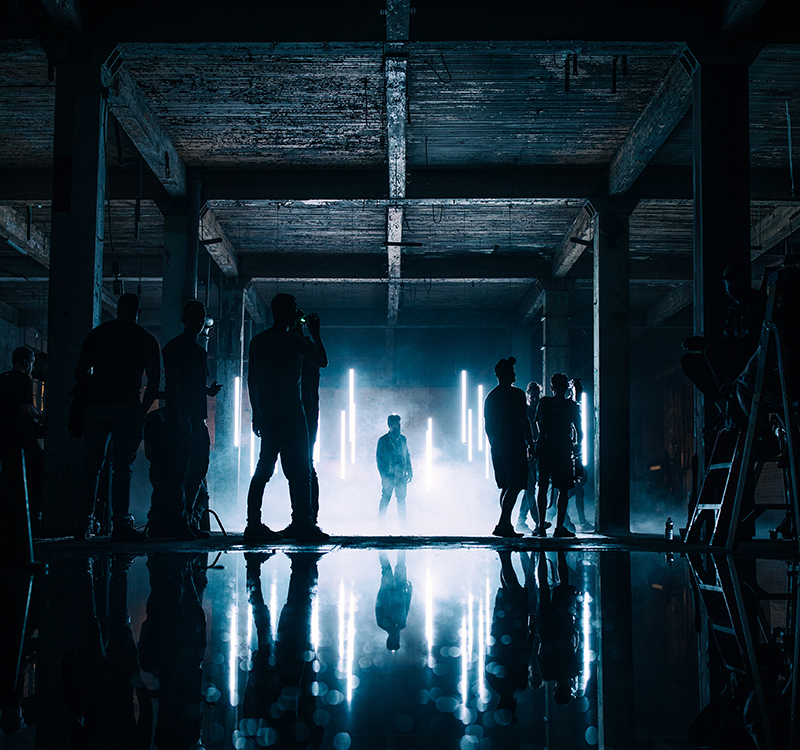
After touring with Bassnectar, Fraboni got a call from Greg Ellis, the LD for Pretty Lights and an electronic, hip hop, soul performer who Rick Rubin once described as “the face and voice of the new American electronic music scene.” Ellis had seen Fraboni’s work for Bassnectar at a festival and invited him to join the Pretty Lights team. This is where Fraboni honed his Vectorworks and design skills. Shortly after, Fraboni was offered his first design gig for the funk band, Lettuce. It was a small production and he was a one man crew. “It was an illuminating experience,” says Fraboni. “It made me realize how little I knew. That six month tour was like a ten year college education.”
At a tour stop in Nashville, Fraboni ran into an old friend, who was working for Creative Artists Agency (CAA). “She showed me a picture of a board in their staff room of designers to call in a pinch. My picture was up there next to major players like Cory FitzGerald. That was a huge career moment for me.”
A couple weeks later, Fraboni received a call from Jon Linton, the manager of Daughtry. The band was opening for the Goo Goo Dolls and was in a crunch to find a new LD. They needed him onsite, in four days, with a brand new time coded show and video content.

Against his better judgment, Fraboni agreed, “I can do it, but I’ll need to bring another guy on board.” Fraboni did not exactly have another guy waiting in the wings, and he “had absolutely no idea what a time coded show was or how to put one together.” He called his mentor, Michael Smalley, who had previously been Bassnectar’s LD, and asked for help. Smalley led the charge and the two came up with a fully time coded show for Linton, which carried them through the summer and into the fall of 2014.
Shortly after that tour ended, Fraboni received a phone call from Linton, asking if he was interested in coming to work for Pitbull — whose worldwide tour with Enrique Iglesias was starting in 20 days. “We were thrilled and walked into this one with our eyes wide open.” Literally. They slept in three hour shifts while cooped up in Smalley’s Atlanta apartment and produced a full, time coded show in just three weeks. Their approach was to take 3D assets from outsourced animators and intercut them with Pitbull’s music videos. The design duo wound up working with Pitbull for the next three years, producing both his touring shows and Vegas residencies.
A Wider View
2016 found Fraboni at a standstill, since Linkin Park (LP), whom he had just finished a year with, was taking a year off from touring. He had been working on side projects with Michael Fullman, the creative director of VT Pro, during LP’s breaks. Fraboni and Fullman eventually joined Martin Garrix’s camp as the new production design team.
“We worked on that project for three months and debuted the show at Ultra in March of 2016. After Ultra, we fully took over and went on to do 130 shows with Garrix. For me, it was a really invigorating experience. While I loved designing and programming lights, there is just so much more to the visual experience. I set a goal to make 2016 the year that I learned how to run lights, live, for a concert. Yes, I built cue stacks but there was no timecode involved. After 130 shows, I felt confident about things on the lighting side and decided it was time to put lasers in my purview.”
He reached out to Rocco Vitale at Pyrotecnico and set up a dozen lasers in the VT Pro warehouse. Working every night for months to familiarize himself with lasers and the Beyond system from Pangolin, he became a pro in his own right, so much so that he was eventually asked to teach a master classes at Pangolin.
“This is why we are looking to push the boundaries at EDC in Vegas. I mean, if we’re going to do something, why not go for a world record, right?” Incorporating a strong laser show into the program was his entire focus of early 2017 and EDC is the culmination of that. Fraboni has always felt the need to push boundaries. To him, boundaries are not a limitation but a motivation.
In the fall of 2017, Fraboni visited Pyrotecnico’s facility in Pennsylvania where he learned Pyro, FX and the pre-visualization software needed to execute his vision. They shot over 300 products at the facility, which Fraboni filmed and took home to study.
“Moving into 2018,” says Fraboni, “I felt like I had all of the pieces to really take on building a show in its entirety. It was time to take my world view and turn it into a show that fits within the Garrix puzzle. I have now learned how to utilize different skill sets from different people to get the best product possible.” He wrote a show concept with Garrix’s VJ and Video director Lorenzo De Pascalis which drove all of the creative decisions for the tour in 2018.
“I completely overhauled the aesthetic of the production design,” recalls Fraboni, “which became this amazing experience of learning how to let go, get the proper team in place, and to manage egos without micromanaging. What I really love about my job right now is that I get to look at the ‘Big Picture.’ You are taking this intangible thing, music, and turning it into a tangible visual feature.” With this view shift comes future opportunities and goals.
“Recently, I’ve been looking to take my talents to music videos and eventually direct a short. I want to expand across more platforms and continue to push myself conceptually and narratively. I feel the most creatively invigorated I’ve ever felt, because I feel I’m starting to have a voice in my work,” he says. That voice has taken the industry by storm. Now, designers who look at Fraboni’s work can see his distinct “signature.”
Fraboni is based in Los Angeles and is the creative director for the Martin Garrix live show. Fraboni has also started his own company, Phantom Labs, a turnkey creative design agency, which has already started to make waves in the tech, fashion and music space. He hopes to expand the company in coming years and evolve across many platforms.
“The past six years have been a wild ride,” says Fraboni. These days when a veteran industry player asks if he’s related to Rob or Louise, he enthusiastically answers, “Yes!” because he knows he is standing in that rehearsal hall or soundstage on his own talent and perseverance. “I realize how lucky I am. I’ve grown up around this for so long that it’s just part of my ethos, you know? Everything in my life is a blessing in its own right; because I know my path is not a common one.”
For more info on Gabriel Frabroni and Phantom Labs, visit www.phntmlabs.com


